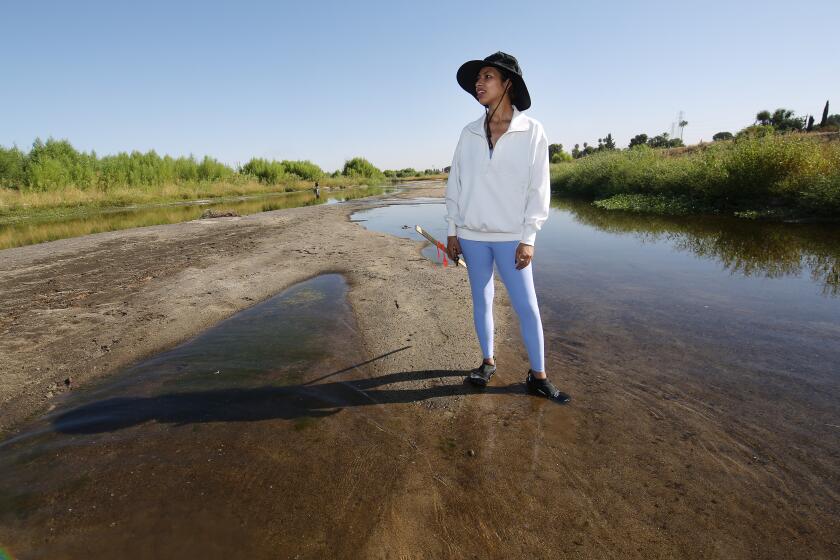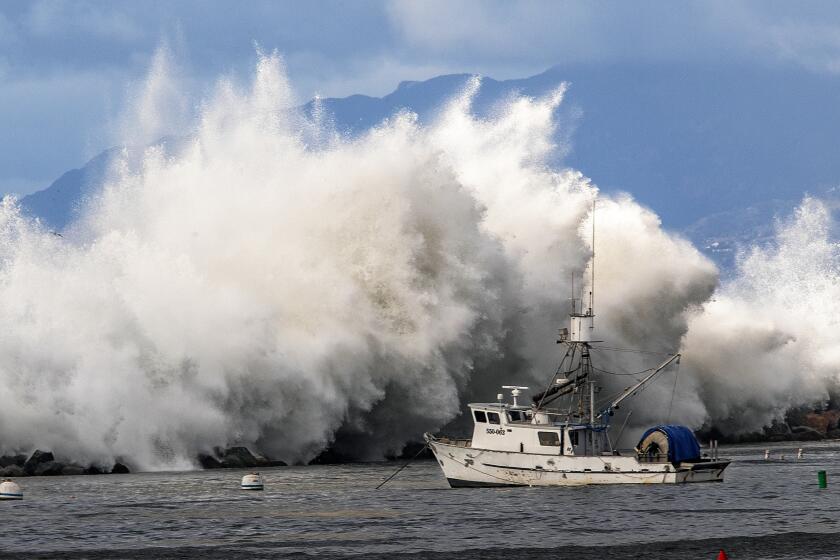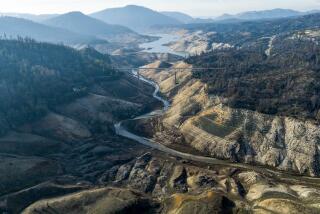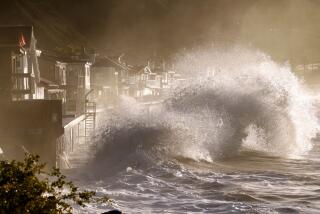
- Share via
- A weak La Niña is forecast to appear this winter and affect weather patterns across the country.
- NOAA forecasters predict expanding drought conditions in the central Rocky Mountains and the Colorado River watershed, a major water source for Southern California.
- The precipitation outlook for California remains uncertain.
A weak La Niña is forecast to appear this winter and affect weather patterns across the country, likely bringing drier-than-average conditions in much of the Southwest and wetter-than-average conditions in the Pacific Northwest, according to the National Oceanic and Atmospheric Administration.
The outlook is uncertain, however, for much of California, where NOAA experts predict there are equal chances of below-average, average or above-average winter precipitation.
“For California, there was quite a bit of uncertainty,” said Jon Gottschalck, chief of the Operational Prediction Branch at NOAA’s Climate Prediction Center. “Drought is not favored to develop in California at the current time, but it’s something we will be watching very closely as we go into the winter, because La Niña events do sometimes have a dry signal, especially in Southern California.”
Atty. Gen. Rob Bonta is backing environmentalists in a legal fight over the Kern River, after thousands of fish died when the river dried up.
Gottschalck and other federal officials presented NOAA’s seasonal outlook Thursday, saying they expect expanding drought conditions in the central Rocky Mountains and the Colorado River watershed, a major water source for Southern California.
Much of the Colorado River Basin is already abnormally dry or experiencing drought conditions, and meteorologists predict those conditions are likely to worsen with La Niña this winter.
“There is going to be some precipitation over the next week, so that may tend to slow down the drought development, but for the season as a whole, by the end of January, we are expecting the drought to expand throughout the Four Corners region, including the Colorado River Basin,” said Brad Pugh, operational drought lead with NOAA’s Climate Prediction Center.
Aggressive and impactful reporting on climate change, the environment, health and science.
More than a fourth of the continental U.S. is currently in at least a moderate drought, Pugh said. “And the winter precipitation outlook does not bode well for widespread relief.”
La Niña is the cold phase of a climate pattern known as the El Niño-Southern Oscillation cycle, or ENSO. During La Niña, unusually cold temperatures in the equatorial Pacific Ocean typically send winter storms on more northerly tracks, leaving the southern U.S. warmer and drier.
According to NOAA, there is now a 60% chance of La Niña emerging by November, and a 75% chance that it will appear by January.
“It is most likely to be a weak, shorter duration event,” Gottschalck said, adding there is also a possibility that La Niña won’t appear and that conditions will remain neutral.
There is more uncertainty in this winter’s forecast than last year, when a strong El Niño coincided with storms that brought a slightly above-average amount of snow and rain to California.
“This winter, given its weak nature and shorter-duration event, we do have less confidence, and some of the impacts may not be as wide-ranging as may be typical, let’s say with a strong La Niña,” Gottschalck said. “Frequent week-to-week changes are more likely this winter, as compared to more persistent or prolonged periods of more consistent weather conditions.”
Meteorologists say long-range forecasts are always difficult to make, but are particularly challenging for California given the state’s highly variable precipitation patterns.
The last La Niña event began in 2020 and ended in early 2023.
While La Niña tends to favor the odds for drought conditions in Southern California, that’s not always the case.
“La Niña tilts this scale towards drought, but if you just get a couple of really moisture-laden atmospheric rivers, it’s going to overwhelm that seasonal cycle,” said Emily Becker, a research associate professor at the University of Miami who wrote NOAA’s latest ENSO update.
Atmospheric river storms that sweep in from the Pacific are “really hard to predict, and they can — if you get several of them in one winter — act as a spoiler for your El Niño-, La Niña-based forecast,” Becker said.
That’s particularly true in a warming climate, Becker said, as warmer oceans mean that storms can more easily increase intensity and moisture.
There is a 65% chance that La Niña conditions will develop between July and September. The climate pattern is associated with dry weather in Southern California.
The warm ocean temperatures in parts of the north Pacific may raise the likelihood of “potentially more wetter storms that could impact the West Coast,” Gottschalck said. “There’s quite a bit of high uncertainty with that, though.”
While La Niña winters have been linked with drought years, that pattern really is only evident in Southern California, said Julie Kalansky, deputy director of the Center for Western Weather and Water Extremes at the Scripps Institution of Oceanography at UC San Diego.
Central and Northern California typically don’t see much of an effect from a La Niña year, she said. “It’s really hard to say what this winter will hold.”
One clear long-term pattern, NOAA scientists say, is that winters are growing warmer as a result of global warming, driven by the burning of fossil fuels and increasing levels of greenhouse gases.
“No two winters are the same, and even in a warming world, we continue to see weather extremes manifest in the coldest months as highly impactful events ranging from blizzards and ice storms to the rapid onset of drought,” said Michael Morgan, NOAA’s assistant secretary of commerce for observation and prediction.
Last month, the Biden administration announced it is investing $100 million in an advanced computer system that will use machine learning to further advance NOAA’s research on weather, climate and ocean predictions. Morgan said this high-performance system, which will be installed at a facility in West Virginia, is crucial for making longer-term predictions that provide vital information for the public.
Toward a more sustainable California
Get Boiling Point, our newsletter exploring climate change, energy and the environment, and become part of the conversation — and the solution.
You may occasionally receive promotional content from the Los Angeles Times.











